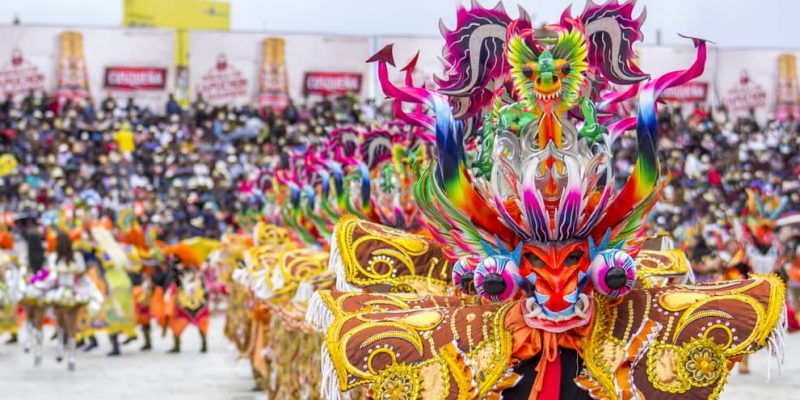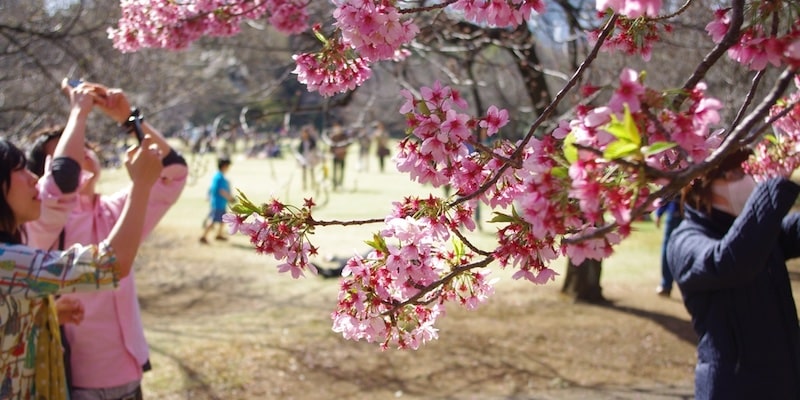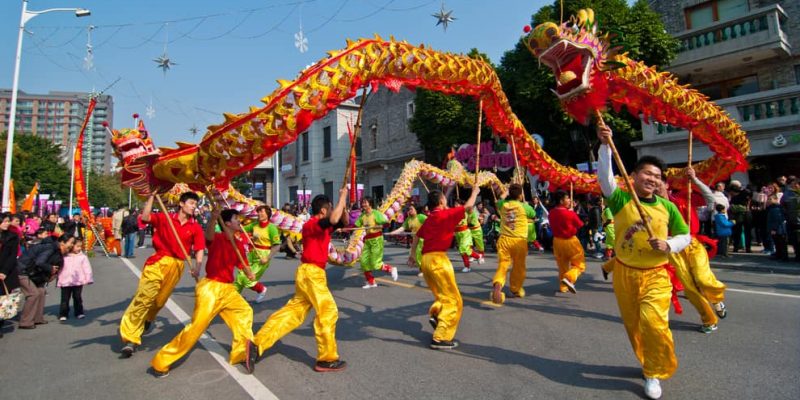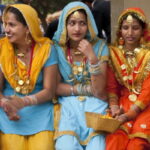We explain what tradition is, what its characteristics are and how it differs from customs. Also, its legal use and examples.

What is tradition?
The tradition is a set of customs, practices or beliefs transmitted from generation to generation within a community, society or culture. Traditions can encompass different aspects of life, such as religious rituals, festivals, ways of dressing, cooking, songs, dances, and other ways of commemorating important elements of society.
The traditions play a crucial role in the construction of cultural and social identity as they provide a sense of continuity and belonging. They help keep the history and cultural heritage of a group alive, as well as strengthen social ties between its members.
There are unique traditions, specific to a society, and there are also traditions shared by different peoples that have a common origin or that share historical and cultural characteristics. Thus, one can speak of national traditions, such as the German tradition and the Spanish tradition, but also the Christian tradition or the Jewish tradition.
On the other hand, when we talk about something or someone being “traditional” or “traditionalist,” we mean that it adheres to or values the customary or inherited way of doing things.
The word “tradition” comes from Latin traditionwhich in turn derives from the verb traderwhich means “to deliver” or “to give through.” The root of the word reflects the essence of what a tradition entails: the act of passing something valuable from one generation to the next, ensuring its continuity over time.
Frequently asked questions
What is a tradition?
A tradition is a practice passed down from generation to generation within a community.
What is the difference between a tradition and a custom?
A tradition is a practice or belief passed down over generations, while a custom can be a common practice without necessarily having a long history.
What is the importance of traditions?
Traditions are important because they strengthen cultural and social identity, and keep a community's heritage alive.
Can traditions change over time?
Yes, traditions can adapt and evolve over time, as long as they retain their essence.
Tradition Features

The tradition is characterized by the following elements:
- Transmission. It is passed from one generation to the next, often through orality, observation and practice.
- Permanence. It lasts over time and can remain valid for decades or even centuries.
- Identity. It contributes to the construction and reinforcement of the cultural and social identity of a group.
- Meaning. It has a symbolic and emotional value, which can be spiritual, cultural, social or historical.
- Rituality It includes practices and ceremonies that are repeated regularly, often on specific dates.
- Flexibility. Although it maintains a stable foundation, it can adapt and evolve over time to reflect social and cultural changes.
See also: Collective identity
Tradition and custom
Traditions and customs are manifestations of a culture, and both can be defined as a set of beliefs and experiences that are inherited from one generation to another. In that sense, these two terms are used almost interchangeably.
However, Customs are those social practices rooted in a community, linked to everyday life with the habits, which from being repeated so much have ended up becoming part of the local identity.
For its part, Traditions involve a greater number of people, reinforcing their sense of belonging to the same person. cultural identity. They include ritual, cultural, religious, gastronomic and folklore practices.
For example, a coastal town in the Caribbean may have the custom of gathering in the plaza on Fridays to dance. It is something that they usually do and that is repeated over time, but at a given moment it could not be done, or it could be done a day before or a day after, because on a Friday it rains too much.
But that same town, on certain dates of the year, worships the Virgin Mary through a procession of the statuette from the church to every corner of the town. This constitutes a religious tradition, which perhaps it shares with neighboring towns, and even with other distant ones, who have the same cultural and religious history.
Tradition in the legal field
In the legal field, we speak of tradition in a particular sense. On the one hand, “customary law” (or simply “the customary”) It is the set of norms or methods of conflict resolution that are inherited historically that is, they come from tradition. This term derives from the Latin customarywhich means “custom” or “habit.”
For its part, the legal term “tradition” is used in legal terms for the act of delivering an asset to a natural or legal person. In this sense, it is synonymous with “transfer” or “transfer.”
Examples of traditions

Some examples of traditions of different origin are the following:
The day of the dead (Mexico)
The Day of the Dead is a holiday that is celebrated on November 1 and 2 of each year, in Mexico and other nations inherited from Mesoamerican cultures.
Families honor their deceased loved ones with altars decorated with flowers, candles, photos, and offerings of the deceased's favorite foods and drinks, believing that their souls return during those days to live with them.
The dancing devils (Venezuela)
Dancing devils is a religious and cultural tradition that is celebrated in several locations in Venezuela on the ninth Thursday after Easter Sunday.
A group of dancers with devil masks accompany the celebration of Holy Week and wear specific outfits, in some regions colorful and full of mirrors and crosses; in others, neatly white.
The ceremony symbolizes devotion and penance to pay homage to the Blessed Sacrament and symbolize the triumph of good over evil.
The carnival devils (Argentina)
In the northwestern region of Argentina, especially in the province of Jujuy, carnival devils are a fundamental part of carnival festivities.
During this celebration, people in colorful costumes and devil masks participate in parades and dances in the streets, to the rhythm of folk music and bands of sikuris (musicians).
This tradition mixes indigenous and Spanish elements.
Dragon Dances (China)
Dragon dances are part of an important tradition in Chinese culture that is usually performed during the Lunar New Year and other important festivals.
It is a dance in which a long dragon figure is presented, made of silk, paper and bamboo. The dragon is manipulated by a group of dancers holding poles along its body.
These dances symbolize wisdom, power and good fortune, and seek to drive away evil spirits and attract prosperity for the new year.
Hanami (Japan)
Hanami is the Japanese tradition of observing the beauty of cherry blossoms (Sakura) in spring.
Families and friends gather in parks and gardens for picnics under flowering trees, enjoying nature and celebrating the transience of life.
Afternoon tea (UK)
The tradition of afternoon tea in the UK involves enjoying a cup of tea accompanied by sandwiches, scones and cakes, usually served between 3 and 5 pm.
This practice, started in the 19th century, is a way to socialize and relax during the afternoon.
Siesta (Spain and several Latin American countries)
The siesta is the practice of taking a short rest or sleep after lunch, common in Spain and several Latin American countries.
This tradition allows you to recharge your batteries and improve productivity during the rest of the day. In many localities, businesses close during siesta hours so that workers can take their rest.
Washing the feet at Holy Week (several Christian countries)
During Holy Week, in many Christian countries, it is common for the foot washing ceremony to be performed. This tradition has its roots in the biblical account of Jesus' Last Supper with his disciples, in which Jesus washed the feet of his followers as an act of humility and service.
This tradition is carried out on Holy Thursday as part of the liturgy. A priest or religious leader washes the feet of twelve people, who represent the apostles. The gesture symbolizes Jesus' teaching about the importance of serving others with love and humility.
The feast of Saint Nicholas (Netherlands and Belgium)
The festival of San Nicolás is a tradition that is celebrated on December 5 and 6. It is based on the idea that Saint Nicholas and his helpers deliver gifts and sweets to children.
Children leave their shoes by the fireplace or door, and fill them with carrots and hay for Saint Nicholas' horse. In exchange, they receive sweets, cookies and small gifts.
This celebration marks the beginning of the Christmas season and promotes the values of generosity and kindness.
References
- Buenos Aires Province. (sf). Tradition concept. ABC. http://servicios.abc.gov.ar
- Dennis, M. (Ed.). (2006). Argentina; Belgium; China; Japan; Netherlands; Mexico; Spain; United Kingdom; United States. Encyclopedia of Holidays and Celebrations.Vol III. Facts on File.
- Foley, J. M. (2019). Oral tradition. Encyclopedia Britannica. https://www.britannica.com/
- Royal Spanish Academy. (2023). Tradition. Dictionary of the Spanish language. https://dle.rae.es/
- The Editors of Encyclopaedia Britannica. (sf). Tradition. Society. Encyclopedia Britannica. https://www.britannica.com/
- White, L.A. (2022). Culture. Encyclopedia Britannica. https://www.britannica.com/
- Wikipedia. (sf). Tradition. https://es.wikipedia.org/
- Wikipedia. (sf). Tradition (law). https://es.wikipedia.org/





